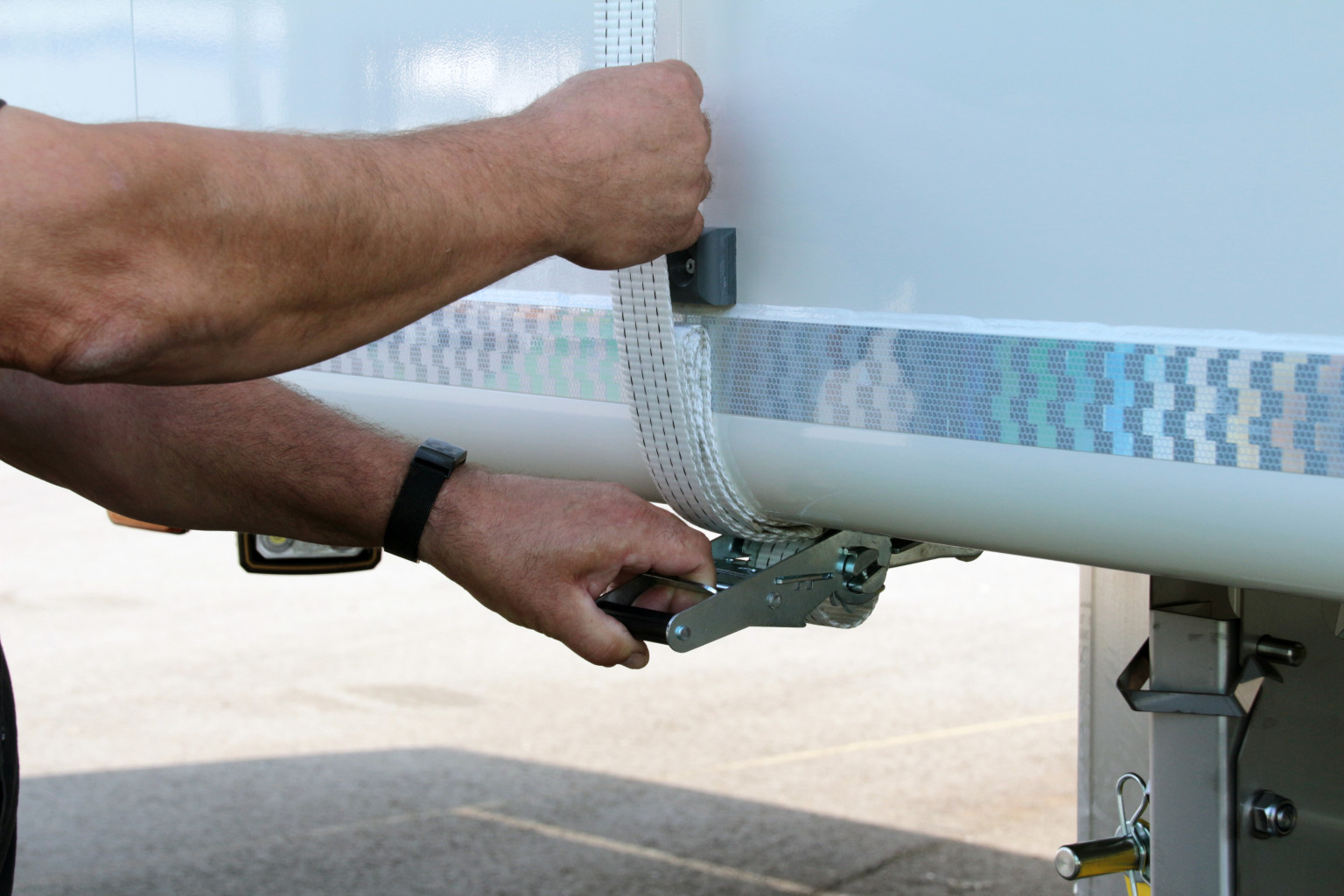
With a Kraker you work quickly and safely
There are several ways to close your roller tarpaulin properly, quickly and securely, e.g. the standard method, with flexible straps or with a quick-release fastener. The choice of locking system depends on the type of transport, among other things, but the visual aspect also plays a role.
Standard roller tarpaulin
The standard roller tarpaulin is closed with a tarpaulin crank from the platform. The roller tarpaulin is secured with 4 lashing straps that are pulled tight with ratchets. Kraker mounted a total of 16 spacer blocks on your trailer to maintain a distance between the sidewall and the lashing straps.
There are also two other options for closing the roller tarpaulin in addition to this standard method:
- with flexible straps
- with a quick-release fastener
Flexible straps, always tightly strapped over the cargo
Flexible straps work the same as the standard method, but with the difference that no fixed lashing straps are used. Flexible straps have an elastic part that makes them stretchable. This type of fastener is the best solution if you often have a top on the cargo. A top means that the loose cargo protrudes like a hump above the trailer. The roof tarpaulin rests directly on the cargo and is tightened securely with ratchets. The cargo always settles a little while driving. The flexible straps lose some elasticity, but they always remain well-tensioned. The tarpaulin is therefore always tight over the cargo.
If you use standard lashing straps with top loads, they often lose tension and start whistling, vibrating or rattling. Sometimes they even come off. If standard straps regularly hit the sidewall next to the spacer blocks, they cause damage to the paintwork and cause it to become dull in places. You can prevent this with flexible straps.

Quick-release fastener
A quick-release fastener is particularly suitable for cargo that do not protrude above the side walls. It is simpler and faster to use than the other two methods, and it looks more aesthetically pleasing. When applying lettering to your trailer, you do not have to take the position of the lashing straps and blocks into account. Unlike the standard fastener and the flexible straps, no lashing straps (and therefore no spacer blocks) are required for the quick-release fastener.
You no longer need to ratchet lashing straps, and instead you close and secure the tarpaulin in one go from the platform.
The roof tarpaulin is also closed with the tarpaulin crank, and the tarpaulin pole is clamped under the set profiles. The profiles are attached to the top of the side panel.A tarpaulin pole is a profile that is attached to the tarpaulin. The tarpaulin is then secured by a short lashing strap on the bulkhead.
The tarpaulin is securely fastened over the entire length with the quick-release fastener.
A second tarpaulin crank handle on the platform is a good option to guarantee extra safe working conditions. This avoids the risk of tripping because the tarpaulin crank or the securing rod is not on the platform during the change.
If you opt for a quick-release fastener, bear in mind that it can only be used for cargo without a top. In extreme cold, the tarpaulin is more rigid and one of the other options would be a better choice.
A combination of a quick-release fastener and lashing straps is also possible. The lashing straps are supplied separately in the toolbox. Spacer blocks are not fitted to the trailer. The quick-release fastener is the standard option. If you have a cargo with a top, attach the lashing straps to the tarpaulin to close your trailer.